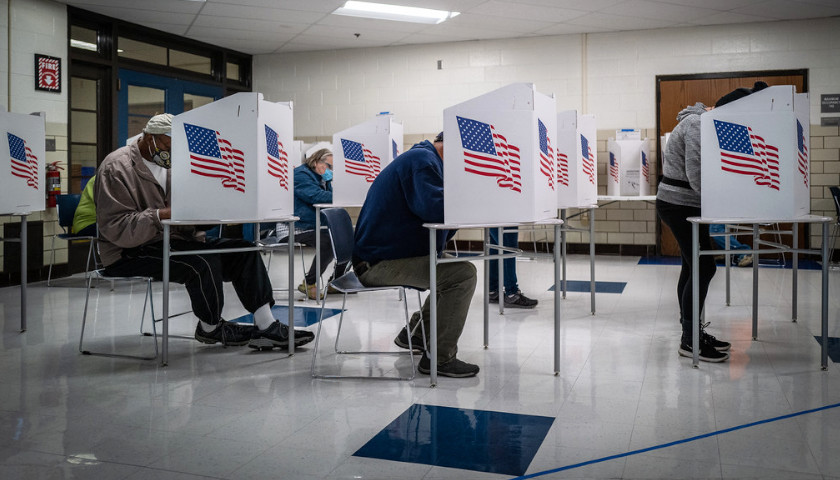by Jason Snead
A “guinea pig.” That is what Sandy, Utah Mayor Monica Zoltanski said that “ranked-choice voting” (RCV) made of her hometown. The town opted into Utah’s controversial RCV pilot program, but the experiment has not gone well. The cost-saving promised by proponents never materialized, but the real alarm bells should have sounded when the experiment produced voter confusion and voter disengagement.
Yet instead of ending this failed pilot program, Utah legislators are now considering a bill to expand ranked-choice voting to primary elections for state and federal office.
Known as “contingency voting,” the process would let counties opt into a primary system that would require candidates to win an outright majority to secure their nomination. To deliver that “majority,” the bill replaces standard primary voting with a convoluted RCV process where voters are asked to rank multiple candidates in each primary race for “Congress, state legislative office, governor, attorney general, state treasurer, or state auditor.” If no candidate wins over 50 percent of the vote, an instant runoff is held between the two highest vote-getters. Votes are recounted and reassigned to whichever of the two finalists the voter ranked higher on his ballot – assuming he ranked one of those finalists at all.
 If he did not, his ballot is considered “exhausted” and would be thrown out. Often in RCV elections, so many ballots are thrown out during tabulation that candidates only win a majority of the remaining votes, but not a majority of all votes cast. In the 2022 Alaska special election, for instance, over 11,000 ballots were tossed out after the first round of tabulation, allowing Mary Peltola to claim a majority even though she won with just 48.4% of the total votes cast.
If he did not, his ballot is considered “exhausted” and would be thrown out. Often in RCV elections, so many ballots are thrown out during tabulation that candidates only win a majority of the remaining votes, but not a majority of all votes cast. In the 2022 Alaska special election, for instance, over 11,000 ballots were tossed out after the first round of tabulation, allowing Mary Peltola to claim a majority even though she won with just 48.4% of the total votes cast.
“Contingency voting” is vulnerable to the same issue, especially when voters face a crowded primary field. Voters may think they will have a say in the outcome of the “instant runoff,” but if they don’t rank one of the finalists, their votes are discounted. That’s effectively the same as being disenfranchised, and studies reveal this is a disturbingly common part of RCV elections. RCV does not deliver a true majority, it manufactures one.
Don’t feel bad if all of this seems confusing. When Zoltanski won Sandy’s mayoral election, residents wanted a recount not just because the race was so close, but because of the complexity of RCV. Voters are wise to be wary. RCV often delivers electoral outcomes that seem bizarre compared to traditional elections. Candidates who fail to garner a majority of first-place votes often win election. The top first-place vote-getter in the 2010 Oakland, California mayoral electionwas bested by another candidate after nine rounds of vote redistribution.
Because RCV elections are so complex, identifying mistakes is far more difficult. The residents of Oakland, California are witnessing this first hand. Officials failed to properly tabulate RCV ballots, and even worse, did not discover their mistake until after the results were certified—and after the wrong candidate in a school board race was declared the winner. Now, the real winner is suing to be recognized.
Clearly, RCV is a confusing mess that makes voting harder and elections less transparent. Yet, millions of dollars are being spent to sell the public on RCV, to campaign for ballot measures, and to lobby lawmakers to expand it in states across the country.
Who is behind this push? The same left-wing donors that have fought to end popular voter ID laws and push a federal takeover of elections with bills like HR 1. Just look at the funders behind FairVote, the nation’s leading proponent of RCV. According to Influence Watch, FairVote’s donors include the Soros family, eBay founder Pierre Omidyar, and some of the largest liberal foundations in the nation.
This may come as a surprise to legislators who have been told that RCV is a nonpartisan reform, or even an opportunity for conservative candidates to more easily win elections. In truth, the objective of RCV isn’t to improve democracy for all but to reshape it for the political advantage of left-wing billionaires and their partisan agendas. That’s why they are spending millions of dollars in “dark money” to push RCV, especially in conservative states like Utah. They start small, with local races and primary elections. But they never stop. An expansion of RCV anywhere is treated as a mandate to expand it everywhere.
Schemes like ranked-choice voting, whether it is called “contingency voting” or an “instant runoff,” disenfranchise voters while fueling doubt and confusion in the electoral system. Expanding RCV is the wrong choice. Here’s the right one: ban ranked-choice voting and focus instead on making it easier to vote and harder to cheat.
– – –
Jason Snead is the Executive Director of Honest Elections Project Action.
Photo “People Voting” by Phil Roeder. CC BY 2.0.





